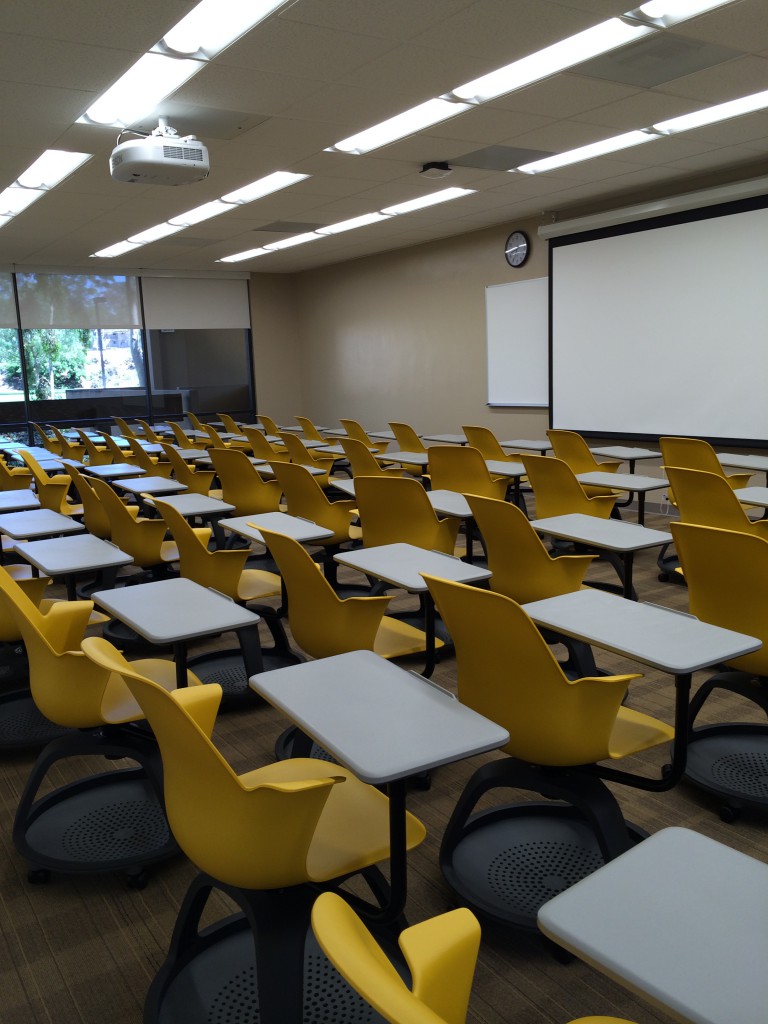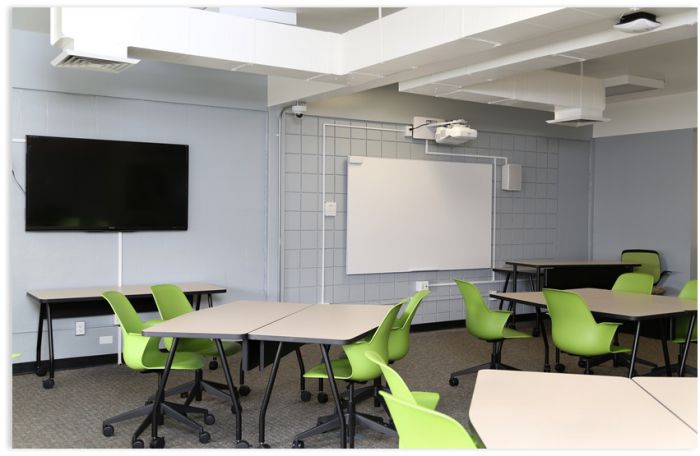When students returned to campus for the Fall 2014 semester, many walked into classrooms that looked a bit more modern.
Over the summer, a total of 16 classrooms underwent top-to-bottom renovations, with not only new paint, lighting and window coverings, but upgraded furniture and technology.
“The learning environment is absolutely a fundamental ingredient in supporting student success and learning,” said Ellen Junn, provost and vice president for academic affairs about the upgrades.

Most classrooms on campus have not changed in years, maybe decades, and with the modern classroom going through somewhat of a paradigm shift in terms of layout, technology and use to accommodate new pedagogy that is moving away from strict lecturing to collaborative, active learning, Junn said it was the right time to invest in renovations.
“If we can create learning spaces conducive to teaching and promoting student interaction, it’s a win-win.”
Nine rooms–four in the Social and Behavioral Sciences building (SBS B-101, B-143, A-144, F-225), two in LaCorte Hall (LCH A-202, A-225), one in the Natural Sciences and Mathematics building (NSM B-252) and two in the Small College Complex (SCC-710 and 900)–have new projectors, DVD/VCRs, document cameras, Dell computers, laptop connections, speakers, a lectern complete with a monitor on a retractable arm, and student seating that is either a combination desk-chair on rollers or large table with individual rolling chairs, all brightly colored.
While these particular refurbished classrooms retain the more traditional desk/chair layout, the mobility of the seating will allow for more flexibility in how a teacher conducts classes.
The renovations made to seven College of Education classrooms move in that direction. COE used grant money to supplement and expand its upgrades. SCC-530, 810, 1404, 1407, 1408, 1409, and 1426 have been re-furnished with a configuration of tables and chairs designed to promote collaboration. These rooms also are now equipped with interactive projectors that allow the instructor to annotate on any image displayed by either a computer or tablet that is connected to the system, and display on new whiteboards, and Apple TVs that will enable presentations from any Apple device on the campus network.

Students can expect more classrooms to be redesigned in the future. The university is in the planning stages to bring in three modular buildings that will house what Junn calls “brilliant” classrooms, going beyond the concept of “smart” classrooms, and incorporating the latest technology and thinking behind the modern learning environment. A committee of professors and administrators have visited several examples of these spaces at other universities to determine best practices CSUDH can implement.
“Newest research shows that students of all types, but especially those from underserved communities, definitely improve their performance, motivation, and engagement in these dynamic environments,” Junn said. “And frankly, it’s just more fun for the students and the professors.”